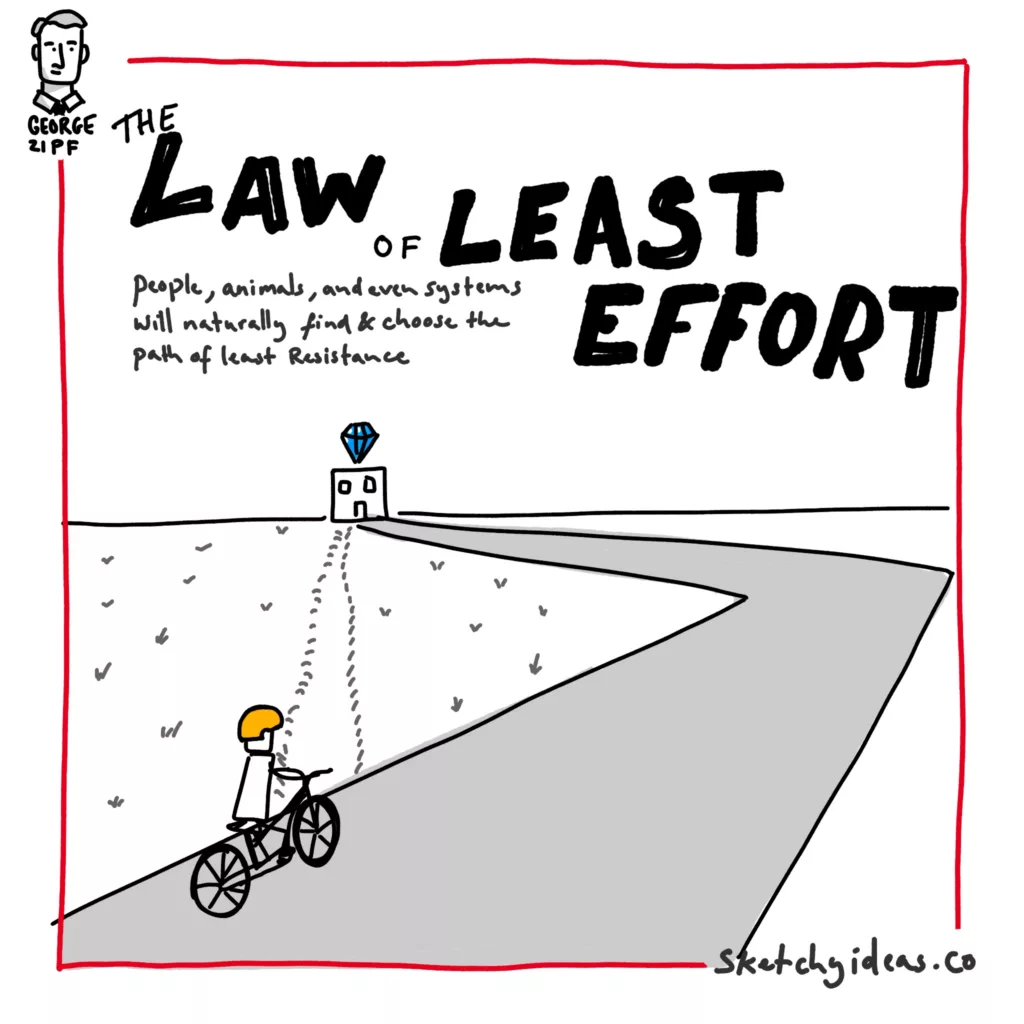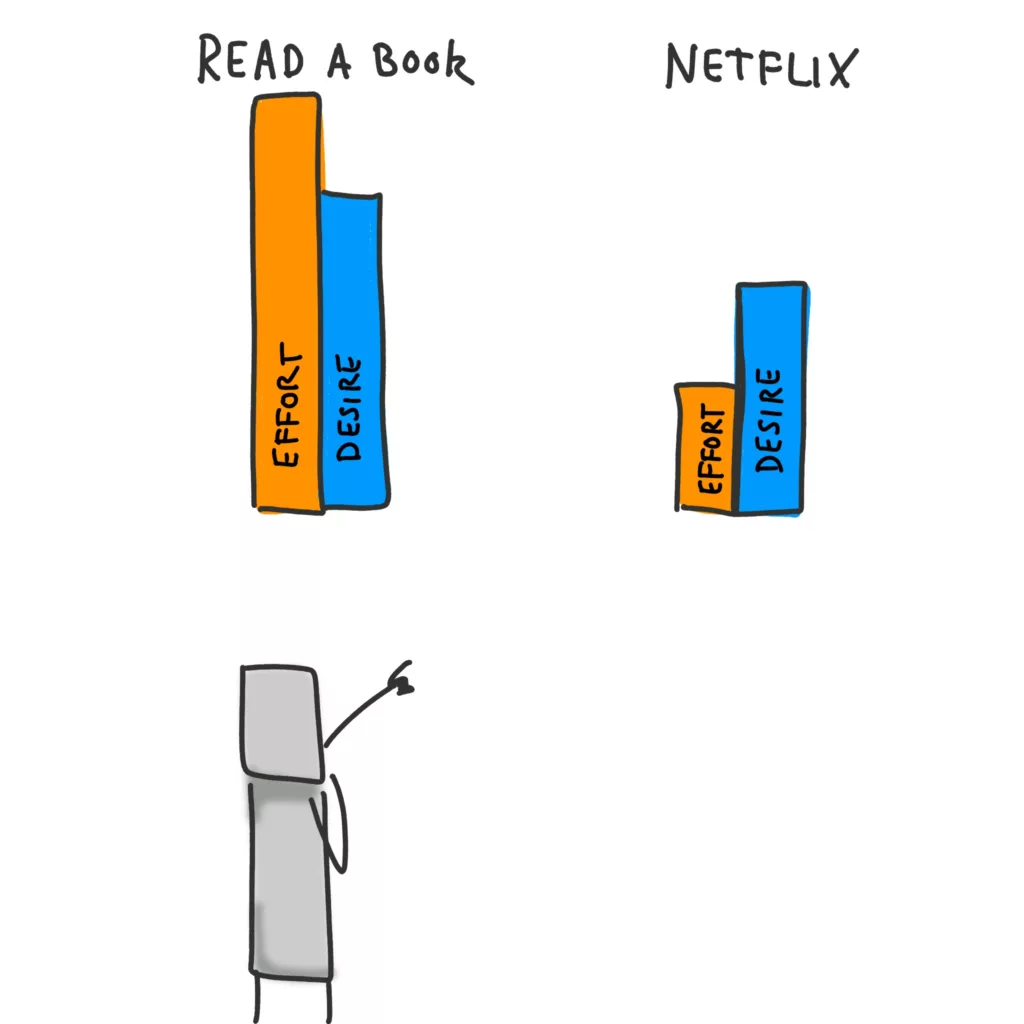Have you ever seen those unofficial paths in a park?
They’re known as “desire paths” and are a great example of the mental model of the principle of least effort at work. Although there may be a perfectly good path right next to them, people choose to walk a different route.
Why?
Read this under 3-minute article and find out.
What is the Principle of Least Effort?
The principle of least effort draws upon the laws of thermodynamics and the principle of survival of the fittest.

It states that people, animals, and even systems will naturally choose (and even find) the path of least resistance. This is because, in the long run, a system that preserves the most energy will win over others.
This applies on grand scales — for example, two rival companies producing goods or services. It also applies on a personal level, for example, the activity you are likely to do this evening.
Understanding this principle can help achieve personal change and business success.
Why It Matters: Easy Actions Win
If an action is easy, it’s more likely than a more difficult one.
An example is real-time chat applications across companies. Because it’s easier to send a chat message than log a task in a task management tool, we will gravitate towards that solution. As Cal Newport points out in A World Without Email, a task management tool is often a better choice as it keeps notes, status and conversation around a specific task.
This happens in other areas of our lives too.
You’re more likely to flick through TikTok or binge Netflix than read a book, as they take less effort. While you can overcome this pattern through pure willpower, it’s draining and ineffective in the long run.

The better solution is to follow the principles laid out in Atomic Habits to make the action you want easier, and the action you don’t harder.
How to leverage the principle of least effort in your day-to-day life
The first step is to pay attention.
If you are looking to make a change in your habits or routines, notice how much effort your ideas take. If there’s one option that takes less effort, that’s a better choice for change. Alternatively, you can consider how you can reduce the effort of each action.
You can also reflect on the actions in your life that are taking a lot of effort. If you can reduce the effort in one area, you will make that action more likely and can free up more energy for other activities.
Make undesirable actions difficult
On the other hand, if you want to discourage a behaviour, you need to make it as difficult as possible.
let’s take the Netflix example. Instead of having a smart TV which is always out and ready to binge, choose a different option. For example, you could only watch using a projector that you have to put up and pack away.
The extra effort will make other actions more attractive.
Learning from “desire paths”
If someone does something “the wrong way” it can be very annoying.
But that’s the wrong reaction. By observing their actions without judgment, we can provide a better experience for them.
One example is Ohio State University. Rather than creating paths in their quad, they waited a year to see the natural paths (desire paths) the students created. Then they paved over those paths.
But sometimes it’s good to change behaviour too.
‘Nudging’ the behaviour of others
Making good actions easier is at the core of Richard Thaler’s book, Nudge.
If we want our colleagues or children to change their actions, making them easier is a key step. Asking someone to go through a great deal of effort can work when there is another incentive or penalty hanging over them, but making them easier is more effective.
For example, Richard Thaler shares the example of putting the salad bar at the front of a buffet or canteen queue. That makes it easier to pick to eat a salad.
Make change effortless with the principle of least effort
The principle of least effort is a useful mental model to change our own and others’ behaviours.
Rather than relying on our efforts and willpower, we should focus on making desired actions as easy as possible and undesirable ones as difficult as possible.
If we want easy changes, we need to make change easy.

Leave a Reply